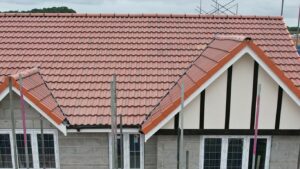How to Choose the Perfect Color Palette for Home Exteriors
The exterior color of a home plays a significant role in its overall curb appeal. Whether you’re renovating, selling, or building from scratch, selecting the right color palette is essential. The right combination of shades can enhance architectural features, blend with the environment, and even increase property value. Understanding how to choose the perfect color scheme requires consideration of various factors, from regional influences to personal style preferences.
Understanding Architectural Style and Structure
Different architectural styles work best with specific color palettes. A modern minimalist home often looks stunning in neutral tones like white, gray, or black, whereas a Victorian house can embrace bold, rich hues with contrasting trim. Colonial homes typically follow classic white or muted pastels, while craftsman-style homes often feature earthy, nature-inspired colors. Paying attention to the history and design of a home helps in making a color choice that complements its character rather than contradicting it.
Considering the Surrounding Environment
 The landscape and surroundings influence the color palette of a home’s exterior. Houses near beaches look best in lighter shades, such as soft blues, whites, and sandy beiges, reflecting the coastal atmosphere. In contrast, homes nestled in wooded areas blend well with deep greens, browns, and warm grays. Urban settings may call for bold or industrial-inspired tones, depending on neighborhood trends. Observing the colors of nearby homes can also ensure harmony while maintaining individuality.
The landscape and surroundings influence the color palette of a home’s exterior. Houses near beaches look best in lighter shades, such as soft blues, whites, and sandy beiges, reflecting the coastal atmosphere. In contrast, homes nestled in wooded areas blend well with deep greens, browns, and warm grays. Urban settings may call for bold or industrial-inspired tones, depending on neighborhood trends. Observing the colors of nearby homes can also ensure harmony while maintaining individuality.
Factoring in Climate and Sunlight
Climate plays a role in how colors appear and how well they age over time. Lighter colors help reflect heat, making them ideal for homes in warmer regions, while darker colors absorb warmth, which can be beneficial in colder climates. Sunlight exposure also affects how a color looks throughout the day. A shade that appears soft and warm in the morning may look different under the harsh afternoon sun. Testing paint samples on different walls at various times of the day provides insight into how the colors truly appear. Do you want to learn more? read the full info here.
Choosing a Balanced Color Combination
 A well-balanced exterior color palette typically includes a primary color, secondary color, and accent shade. The primary color covers the majority of the home’s exterior, while the secondary color is often used for trim, shutters, or architectural details. The accent color highlights doors, railings, or decorative elements. A harmonious blend of these three ensures a cohesive look without overwhelming the design. Neutral tones paired with a pop of color create an inviting yet sophisticated effect.
A well-balanced exterior color palette typically includes a primary color, secondary color, and accent shade. The primary color covers the majority of the home’s exterior, while the secondary color is often used for trim, shutters, or architectural details. The accent color highlights doors, railings, or decorative elements. A harmonious blend of these three ensures a cohesive look without overwhelming the design. Neutral tones paired with a pop of color create an inviting yet sophisticated effect.
Coordinating with Roof and Hardscape Elements
The existing roof color, driveway, and pathways should be taken into account when selecting an exterior color palette. A warm-toned roof pairs well with earthy or beige exteriors, while a cool-toned roof works with blues, grays, and crisp whites. Brick or stone elements should also complement the chosen paint colors rather than clash. Since these elements are not easily changed, it’s essential to select shades that work well with their natural tones.
Testing and Finalizing the Palette
Once a few potential colors are in mind, testing them on a small section of the home provides a better sense of how they look in real conditions. Viewing the colors in different lighting conditions helps in making a confident decision. Additionally, considering finishes such as matte, semi-gloss, or satin can impact the final appearance. Consulting a professional or using online visualization tools can also provide a preview before committing to a color scheme.